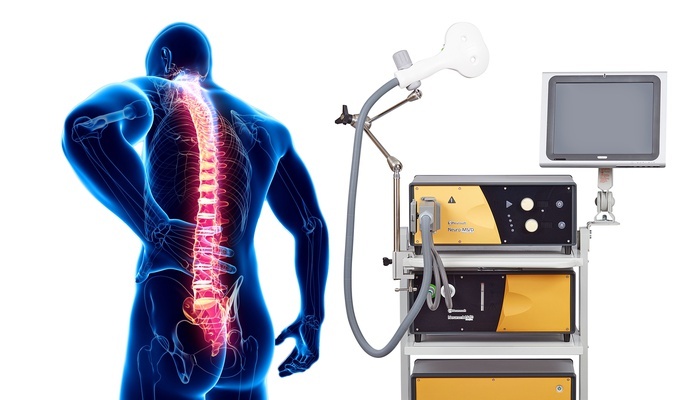rTMS treatment of neuropathic pain
Neuropathic pain is characterized by a distinct set of symptoms, such as a burning sensation and pain resulting from non-painful stimulations. Fibromyalgia, orofacial pain, and phantom pain are different types of neuropathic pain. Neuropathic pain is caused by damage to, or a disease of the somatosensory system and it’s estimated that up to 10% of the general population experiences neuropathic pain symptoms (Colloca, 2017). Standard treatment for neuropathic pain is medication or behavioral therapy. For those patients not responding to standard therapy, repetitive transcranial magnetic stimulation (rTMS) is an emerging option.
rTMS makes use of powerful, focal magnetic field pulses to induce changes in the activity of the brain regions affected by neuropathic pain. The rTMS treatments reduce pain by inducing alterations in the activity of cortical and subcortical brain regions related to pain modulation and processing.
Often, the brain region targeted for high-frequency rTMS treatment is the primary motor cortex (M1) contralateral to the pain. Other brain regions such as the dorsolateral prefrontal cortex (DLPFC) and the vertex have been the subject of stimulation in various studies (Yang, 2020). Adding a MRI-guided neuronavigation system to a rTMS system has te potential to more accurately target these brain areas.
The application of rTMS treatments for neuropathic pain has proven to be safe and effective in many clinical trials. In his review article Lefaucheur (2020) states definite efficacy of high frequency rTMS of the primary motor cortex (M1) contralateral to the painful side for neuropathic pain (Lefaucheur, 2020). Especially in cases of central pain, pain from peripheral nerve disorders, fibromyalgia, and migraine rTMS appears to have beneficial effects. Additionally, rTMS may be a valid treatment for patients with orofacial pain, pelvic pain, phantom limb pain, low back pain, myofascial pain syndrome, and complex regional pain syndrome (Yang, 2020).
